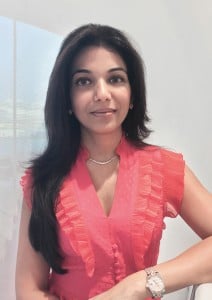
October 27, 1994. The web gives birth to banner ads. The first 468×60 banner ad goes up on a website and the user is encouraged to click on it. Fast forward to 2016 (insert a trippy sound effect). It’s the week after the US presidential election. Buster, the boxer dog, jumping on a trampoline garners 137.2 million views in its first week. This is where and how digital advertising is now.
For years, click advertising was a proxy for success in the digital media. It was. The world wide web, now, is more than an information hoarder. It has evolved into an experience generator. It started mirroring its end-user. Constantly changing. Always engaging. Never boring. Marketers who embraced this change stayed on the top while the rest dined with the dinosaurs.
When I took over Raée in 2011, my path was clearly chalked out. Forget the multi-vertical approach, focus on the basics. Idea is the king. Content is paramount. The mediums might vary (in most cases, they did) but the mandate remained the same: stay relevant. We pulled the walls down, trashed the jargon and worked horizontally across all disciplines. One brand story. Multiple channels. Of course, the message had to be redesigned and rejigged to make the most of the medium. Mobile ads, native advertising, branded content, webisodes, apps, websites or PR – the story does not change.
From dissipating information, social media has progressed into a platform to deliver positive brand experiences. It’s all about reaching the right people at the right time, at the right place. Feel free to use this when you meet your client the next time. Together, Facebook and Google lead to 76 percent of internet advertising growth. In the UAE, 91 per cent of online consumers have taken action after seeing a message from a brand that is relevant to them. More so if it sparks their passion or speaks their language. Given the meteoric rise in how people of MENA are using the internet for almost everything – buying, finding, reading, dining and ranting – the task at hand is to target them at the most opportune moment. Google calls it ‘moments that matter’.
Twitter, even with its 140-character limit, doubles up as a full-fledged PR tool now. Today, Facebook is an advertising juggernaut. From quick background checks by headhunters to labels going live with their launches, the social platform is brimming with possibilities as we speak. The icing on the cake, however, is the behavioural data. Tapping into it, we can now craft a highly-targeted campaign to a highly-segmented audience.
The traditional sense was to make the brand present everywhere. Marketers pumped in capital to make the brand omnipotent. The tactic was a hit or a miss. Thankfully, there’s a smarter way of doing things now. Make people talk to people. ‘Influencers’ are a new breed of people brands can leverage to take their story forward. Positive conversations can be generated. Crises can be effectively managed. Brand advocacy can be organically built. It’s all about making the right conversation on the right channel.
A recent piece of market research revealed that the UAE has the highest per capita mobile phone penetration, estimated at 80.6 per cent of the population. Add to it the 25 per cent who use at least three devices on a daily basis. Meaning almost everyone has a smart phone today. If not two. And, I hate to admit, everyone is glued to them. I also read, generally people look at their mobile phone 150 times per day. If you want to make the most of it, you’ve got to up your game. Stay relevant or you will stay out of their sight. Going ahead, marketers have to create mobile-responsive sites, mobile-targeted content and campaigns. If you have not, habibti and habibi, take cue.
Mobile will dominate over desktop. But Facebook will reign over both. It’s the most widely used social media network to date. Its enviable list of features and handy tools helps you not only grab the attention of the user but also take your digital marketing strategy to the next level.
As we are about to wrap up 2016, it’s time to reevaluate your digital strategy for the year to come. Today, more than ever, MENA consumers rely more on brands’ digital messages to guide them through their purchase journey. The staggering rise of smartphone users in the region has further led to the unbelievable rise of online videos. Facebook Live streaming, Periscope, Snapchat, YouTube and various other channels have created a huge number of active users. Just to give you a perspective, in the UAE, there’s an 88 per cent year-on-year increase in watch time on YouTube. Moral of the story: if you win their attention, you earn their trust.
Farzana Esmaeel, General manager of Raée










